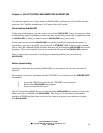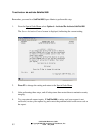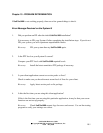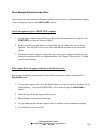9.1
SafeNet/400 Reference Guide
Copyright 2008 MP Associates of Westchester, Inc.
V8.50 - May 2008
Chapter 9 - DE-ACTIVATING AND REMOVING SAFENET/400
You must be signed on as a Super Admin in SafeNet/400 to perform any Activate/De-Activate
processes. See ‘SafeNet Administrator’ in Chapter One of this guide.
De-activating SafeNet/400
Under some circumstances you may want to de-activate SafeNet/400. It may be necessary when
troubleshooting network problems to make sure they are not being caused by an application such
as SafeNet/400, or when you need to remove SafeNet/400 from your system.
If after you have de-activated SafeNet/400 you still have problems with network requests or
connections, you may want to IPL your System i5 or ENDSBS *ALL to uncover any autostart
jobs or other IPL-initiated OS/400 activities that may still be allocating SafeNet/400 objects and
programs. This is not required if you do not need to de-allocate all the SafeNet/400 programs.
Once you have been successful in isolating your network problem, you can re-activate
SafeNet/400.
Before de-activating
Optionally, rather than de-activating SafeNet/400 you can remove one or more exit points if
required.
For example, if you have a problem with the *FILESRV server function use the WRKREGINF
command to:
1. Locate the OS/400 exit point for the *FILESRV server function
2. Remove the SafeNet/400 exit program
3. Stop and restart the file server
This will prevent the OS/400 file server job from using SafeNet/400 but continue to protect the
other server jobs in OS/400 with SafeNet/400. This way you can eliminate a performance
problem or OS/400 problem from one server but continue to protect your other access points
with SafeNet/400.


















